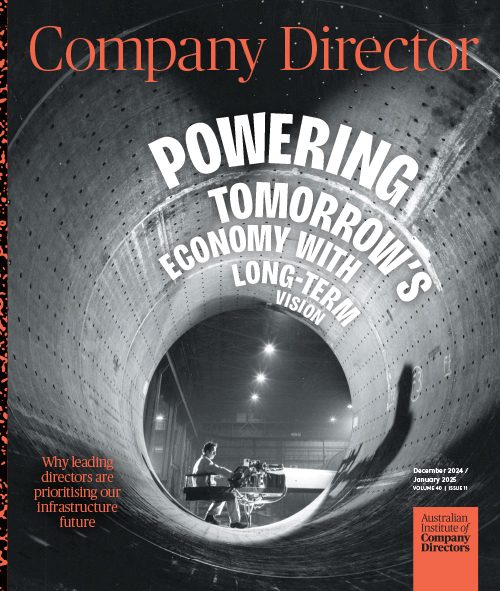The challenge for boards reflects the challenges we face as a nation post-pandemic in maintaining the diversity of our population.
Last month, the seventh cohort of the AICD’s Chair’s Mentoring Program commenced their journey. Already an experienced and accomplished group, the mentees will be guided over the course of the year by some of Australia’s leading directors on advancing their director careers and developing their governance understanding.
The Chair’s Mentoring Program has long been a cornerstone of the AICD’s diversity program. Started in 2010 with the aim of developing the pool of board-ready women, the program now has more than 340 alumni, many of whom have gone on to be prominent directors, and some to be mentors in the program. The mentoring program has played a part in the great progress we have seen over the past decade in creating more gender-balanced boards. When the program launched, female representation on ASX 200 boards was just 8.3 per cent. By 2019, the ASX 200 had reached the 30 per cent target and now sits at 34.2 per cent.
We know there is still more work to do. The AICD now advocates for a 40:40:20 model of board gender diversity, which calls for a standard of 40 per cent of women and men on all boards — with the remaining 20 per cent being flexible, depending on the timing of appointments and board size.
Getting the right mix
Boards are also now aware that they need to think beyond gender if they are to get the right mix. Achieving greater board diversity strengthens governance for two reasons. Firstly, you get a more diverse range of viewpoints and better board discussions, which ultimately improves decision-making. Secondly, it creates a broader talent pool to draw from.
“We are missing out on a lot of talent,” Australian Sports Commission director Kurt Fearnley AO said in these pages last year, in reference to the underrepresentation of people with disabilities on Australian boards. The same could be said about the lack of cultural diversity on boards.
Diversity of skills and professional backgrounds is also important. We need to ask whether our boards have the skills and expertise to compete in a world of rapid technological change. While not all boards will need to bring in new directors with digital or technology backgrounds, generally we need to build a pipeline of directors with those skill sets.
The challenge for boards reflects the challenges we face as a nation post-pandemic in maintaining the diversity of our population. Migration has been a source of strength for our economy and society throughout our history, and particularly in the past 30 years. The skilled migration program has been one of the underrated policies of the great reform era in Australia in driving our national prosperity.
We are now facing perilous skill shortages that have been exposed by the Omicron wave of COVID-19. We need to rebuild a migration program that matches the needs of our economy. In the long term, for a trading nation, a more diverse workforce is not just better equipped to compete internationally, it also opens opportunities in global markets through deeper connections. A package of reforms to boost the skilled migrant intake would add an estimated $13 billion in government revenue alone over the lifetime of each yearly migrant intake, according to the Grattan Institute.
Creating diverse and inclusive boards and organisations, reflecting the tremendous strength and success of multicultural Australia, will be critical for our next phase of growth.
Latest news
Already a member?
Login to view this content



